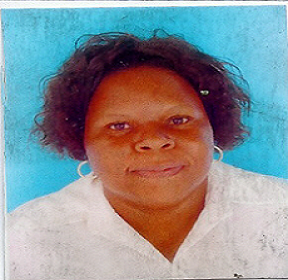
Doreen Anna Mloka
Muhimbili University of Health and Allied Sciences (MUHAS) TanzaniaTitle: Medically important Fungi and Fluconazole resistant of Candida sp isolated from hospital cockroaches
Abstract:
Hospital care associated infections (HAI) are a major public health concern worldwide associated with high rates morbidity, mortality and health care costs. The World Health Organization (WHO) estimates that the prevalence of HAIs varies between 5.7% and 19.1% in low- and middle-income countries (1). The reduction of incidence and elimination of HAIs is impossible, with regular surveillance and effective infection control prevention (ICP) programs. Nevertheless, effective implementation of IPC measures in resource limited countries is a difficult, due to lack of resources and lack of basic facilities like access to clean running water (2).
Cockroaches are common pests of domestic pets of households, hospitals and industrial areas. They tend to live and hide in dark cracks and crevices of kitchens, toilets and food stores; as these are ideal environments in terms of temperature, humidity and sources of nutrition for them to flourish. Moreover, as hospital kitchens and toilets are areas are often contaminated with infectious microorganisms including bacteria, viruses, and protozoa, these areas may act as sources for contamination of cockroaches with pathogens associated with HAIs. Subsequently, free running cockroaches in the hospital environments may act as potential carriers, transmitters and reservoirs of infectious and drug resistant microorganisms associated with HAIs (3).
We thus embarked on a study to evaluate the mycological profile of cockroaches surfaces captured from the main Intensive care unit (ICU), burn unit, surgical and orthopedic wards, intern hostel kitchen and the central kitchen of a national referral teaching Hospital in Tanzania. Normal saline washings from the external surface of cockroaches were cultured on standard mycological media to facilitate isolation and identification of medically important molds and yeasts. Susceptibility to fluconazole was tested using the CLSI M27-A3 microdilution method. A total of 213 cockroaches were captured from various sites of the hospital between February and March 2018. All cockroaches captured were shown to carry medically importance fungi. A total of 956 medically important fungi were isolated, 57.5 % were Candida sp., 21.2%, Aspergillus sp., 3.6% Cladosporium sp., 2.1% Rhizopus sp., 1.4 % Geotrichum sp., 0.9 % Pencillum sp. , 1.7% Alternaria sp, 0.6 % Fusarium sp , 0.3% Mucor sp and 10.1% others. Aspergillus fumigatus (50.0%) was the most commonly isolated species followed by Aspergillus niger (15.8%) among the Aspergillus isolates. Over 16.3 % of the Candida isolates not intrinsically resistant to fluconazole showed resistance to this drug. Resistance was most frequently found in Candida pseudotropicalis (23.8%) and Candida glabarata (20.0%) and least in isolates of Candida albicans ( 6.3%). The study concluded that the external surfaces of cockroaches from this hospital may act as reservoirs of medically important opportunistic fungi exhibiting resistance to fluconazole. Moreover that hospital enhance its fumigation and IPC practices to prevent the transmission of drug resistant opportunistic fungi found on the surfaces of hospital cockroaches .
Biography:
Doreen Anna Mloka is a medical microbiologist by profession, she is also a senior lecturer in the School of Pharmacy, University Curriculum Chair and Director of Continuing education and Professional Development, at the Muhimbili University of Health and Allied Sciences (MUHAS) , Dar es Salaam, Tanzania. She holds a PhD in Medical Microbiology and a fellowship in medical Education. She has broad background in Microbiology and molecular biology, with specific training and expertise in PCR, drug resistance testing including for HIV .

